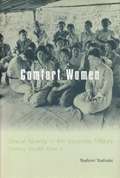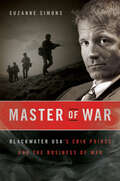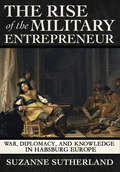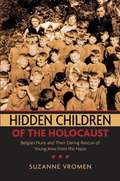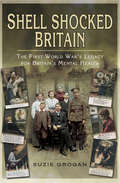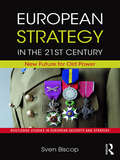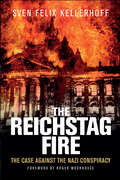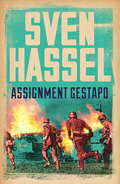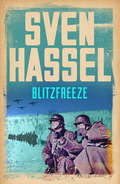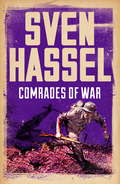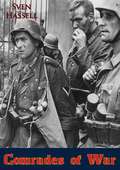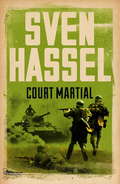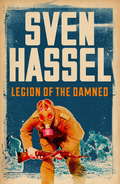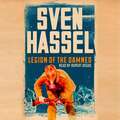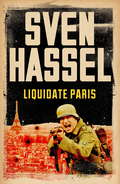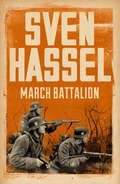- Table View
- List View
Comfort Women: Sexual Slavery in the Japanese Military During World War II
by Yoshimi Yoshiaki Suzanne O'BrienYoshimi Yoshiaki provides a wealth of documentation and testimony to prove the existence of some 2,000 centers where as many as 200,000 Korean, Filipina, Taiwanese, Indonesian, Burmese, Dutch, Australian, and some Japanese women were restrained for months and forced to engage in sexual activity with Japanese military personnel. Many of the women were teenagers, some as young as fourteen. To date, the Japanese government has neither admitted responsibility for creating the comfort station system nor given compensation directly to former comfort women. This English edition updates the Japanese edition originally published in 1995 and includes introductions by both the author and the translator placing the story in context for American readers.
Lost Souls of Leningrad: A Novel
by Suzanne ParryFrom the tyranny of Stalin through the desperation of World War II, this is a story of struggle and survival, of devotion, duty, and family, and of love lost and sometimes found again. June 1941. Hitler’s armies race toward vulnerable Leningrad. In a matter of weeks, the Nazis surround the city, cut off the food supply, and launch a vicious bombardment. Widowed violinist Sofya Karavayeva and her teenage granddaughter, Yelena, are cornered in the crumbling city. On Leningrad’s outskirts, Admiral Vasili Antonov defends his homeland and fights for a future with Sofya. Meanwhile, Yelena’s soldier fiancé transports food across the Ice Road—part of the desperate effort to save Leningrad. With their help, the two women inch toward survival, but the war still exacts a steep personal price, even as Sofya’s reckoning with a family secret threatens to finish what Hitler started.Equal parts war epic, family saga, and love story, Lost Souls of Leningrad brings to vivid life this little-known chapter of World War II in a tale of two remarkable women—grandmother and granddaughter—separated by years and experience but of one heart in their devotion to each other and the men they love. Neither the oppression of Stalin nor the brutality of Hitler can destroy their courage, compassion, or will in this testament to resilience.
Master of War: Blackwater USA's Erik Prince and the Business of War
by Suzanne Simons“Suzanne Simons is a masterful storyteller. But make no mistake—Master of War is not a work of fiction….A powerful and true account.”—Wolf Blitzer, anchor, CNN’s The Situation RoomMaster of War is the riveting true story of Eric Prince, the ex-Navy SEAL who founded Blackwater and built the world’s largest military contractor, privatizing war for client nations around the world. A CNN producer and anchor, Suzanne Simons is the first journalist to get deep inside Blackwater—and, as a result of her unprecedented access, Master of War provides the most complete and revelatory account of the rise of this powerful corporate army and the remarkable entrepreneur who brought it into being, while offering an eye-opening, behind-the-scenes look at the wars in Iraq and Afghanistan.
The Rise of the Military Entrepreneur: War, Diplomacy, and Knowledge in Habsburg Europe
by Suzanne SutherlandThe Rise of the Military Entrepreneur explores how a new kind of international military figure emerged from, and exploited, the seventeenth century's momentous political, military, commercial, and scientific changes. In the era of the Thirty Years' War, these figures traveled rapidly and frequently across Europe using private wealth, credit, and connections to raise and command the armies that rulers desperately needed. Their careers reveal the roles international networks, private resources, and expertise played in building and at times undermining the state.Suzanne Sutherland uncovers the influence of military entrepreneurs by examining their activities as not only commanders but also diplomats, natural philosophers, information brokers, clients, and subjects on the battlefield, as well as through strategic marital and family allegiances. Sutherland focuses on Raimondo Montecuccoli (1609–80), a middling nobleman from the Duchy of Modena, who became one of the most powerful men in the Austrian Habsburg monarchy and helped found a new discipline, military science. The Rise of the Military Entrepreneur explains how Montecuccoli successfully met battlefield, court, and family responsibilities while contributing to the world of scholarship on an often violent, fragmented political-military landscape. As a result, Sutherland shifts the perspective on war away from the ruler and his court to instead examine the figures supplying force, along with their methods, networks, and reflections on those experiences.
Hidden Children Of The Holocaust: Belgian Nuns And Their Daring Rescue Of Young Jews From The Nazis
by Suzanne VromenIn the terrifying summer of 1942 in Belgium, when the Nazis began the brutal roundup of Jewish families, parents searched desperately for safe haven for their children. As Suzanne Vromen reveals in Hidden Children of the Holocaust , these children found sanctuary with other families and schools-but especially in Roman Catholic convents and orphanages. Vromen has interviewed not only those who were hidden as children, but also the Christian women who rescued them, and the nuns who gave the children shelter, all of whose voices are heard in this powerfully moving book. Indeed, here are numerous first-hand memoirs of life in a wartime convent-the secrecy, the humor, the admiration, the anger, the deprivation, the cruelty, and the kindness-all with the backdrop of the terror of the Nazi occupation. We read the stories of the women of the Resistance who risked their lives in placing Jewish children in the care of the Church, and of the Mothers Superior and nuns who sheltered these children and hid their identity from the authorities. Perhaps most riveting are the stories told by the children themselves-abruptly separated from distraught parents and given new names, the children were brought to the convents with a sense of urgency, sometimes under the cover of darkness. They were plunged into a new life, different from anything they had ever known, and expected to adapt seamlessly. Vromen shows that some adapted so well that they converted to Catholicism, at times to fit in amid the daily prayers and rituals, but often because the Church appealed to them. Vromen also examines their lives after the war, how they faced the devastating loss of parents to the Holocaust, struggled to regain their identities and sought to memorialize those who saved them.
Shell Shocked Britain: The First World War's Legacy for Britain's Mental Health
by Suzie GroganWe know that millions of soldiers were scarred by their experiences in the First World War trenches, but what happened after they returned home? Suzie Grogan reveals the First World War's disturbing legacy for soldiers and their families. How did a nation of broken men, and 'spare' women cope? In 1922 the British Parliament published a report into the situation of thousands of 'service patients', or mentally ill ex-soldiers still in hospital. What happened to these men? Were they cured? What treatments were on offer? And what was the reception from their families and society? Drawing on a huge mass of original sources, Suzie Grogan answers all those questions, combining individual case studies with a narrative on wider events. Unpublished material from the archives shows the true extent of the trauma experienced by the survivors. This is a fresh perspective on the history of the post-war period, and the plight of a traumatised nation.
Far Across the Ocean
by Suzie HullDon't miss the next achingly romantic read from Suzie Hull, winner of the RNA Joan Hessayon award 2022'A gripping story of love and loss, rich in period detail. I loved it!' CLARE MARCHANT on In this Foreign LandThe answers to her past and present lie far across the ocean...December 1913. Clara Thornton won't allow being jilted at the altar to squash her spirit. Against the wishes of her aunt and uncle, Clara decides to travel to Madagascar to learn more about the tragic shipwreck that took the lives of her missionary family, and marked her forever.Clara is escorted abroad by Xavier Mourain, a handsome young merchant who works with her uncle. The two of them start off on the wrong foot, but Clara can't help but be drawn to the mysterious Frenchman who helps her unravel the mystery that has always haunted her. But as their love blossoms, war begins. And the world will never be the same again.For Clara, all the answers seem to lie far across the ocean. But some of them might be closer than she thinks...Readers are loving Suzie Hull: 'Vivid, vibrant and beautiful!' 5*'A heartwrenchingly good read' 5*'What a gorgeous debut!' 5*'Beautiful love story' 5*' A really enjoyable and engaging book with a storyline full of twists and turns' 5*'Breathtaking' 5*'Love love loved it!' 5*'What a great read and my favourite era too ... an evocative tale of love and loss. And the settings - just wonderful. More please!' 5*
Far Across the Ocean
by Suzie HullDon't miss the next achingly romantic read from Suzie Hull, winner of the RNA Joan Hessayon award 2022'A gripping story of love and loss, rich in period detail. I loved it!' CLARE MARCHANT on In this Foreign LandThe answers to her past and present lie far across the ocean...December 1913. Clara Thornton won't allow being jilted at the altar to squash her spirit. Against the wishes of her aunt and uncle, Clara decides to travel to Madagascar to learn more about the tragic shipwreck that took the lives of her missionary family, and marked her forever.Clara is escorted abroad by Xavier Mourain, a handsome young merchant who works with her uncle. The two of them start off on the wrong foot, but Clara can't help but be drawn to the mysterious Frenchman who helps her unravel the mystery that has always haunted her. But as their love blossoms, war begins. And the world will never be the same again.For Clara, all the answers seem to lie far across the ocean. But some of them might be closer than she thinks...Readers are loving Suzie Hull: 'Vivid, vibrant and beautiful!' 5*'A heartwrenchingly good read' 5*'What a gorgeous debut!' 5*'Beautiful love story' 5*' A really enjoyable and engaging book with a storyline full of twists and turns' 5*'Breathtaking' 5*'Love love loved it!' 5*'What a great read and my favourite era too ... an evocative tale of love and loss. And the settings - just wonderful. More please!' 5*
In this Foreign Land: A romantic and page-turning WW1 saga
by Suzie Hull'I beg of you this one thing - that if I should perish here, in this foreign land, that you will look after her.'March, 1914. When talented artist Isobel embarks on a journey to Egypt, it's to reunite her best friend Alice with her husband, Wilfred - and to use the stunning sights of Cairo as inspiration for her own paintings. A whirlwind romance was the last thing she expected, but when Isobel meets Wilfred's handsome brother, Edward, neither can deny the strong connection between them - especially when unexpected tragedy strikes, leaving them all reeling.Just as they get to grips with their grief, WW1 erupts, and the lovers are forced to separate. They promise to meet again in London. But when Edward is listed as 'missing - presumed dead' only weeks after landing in France, Isobel is devastated, unmarried and on the brink of ruin. She has only one way to save her honour... but it means betraying the love she holds so dear. A heartrending and thrilling WW1 romance, In This Foreign Land is the stunning new debut from Suzie Hull, for fans of Kate Hewitt, Shirley Dickson and Kate Eastham.
In this Foreign Land: A romantic and page-turning WW1 saga
by Suzie Hull'I beg of you this one thing - that if I should perish here, in this foreign land, that you will look after her.'March, 1914. When talented artist Isobel embarks on a journey to Egypt, it's to reunite her best friend Alice with her husband, Wilfred - and to use the stunning sights of Cairo as inspiration for her own paintings. A whirlwind romance was the last thing she expected, but when Isobel meets Wilfred's handsome brother, Edward, neither can deny the strong connection between them - especially when unexpected tragedy strikes, leaving them all reeling.Just as they get to grips with their grief, WW1 erupts, and the lovers are forced to separate. They promise to meet again in London. But when Edward is listed as 'missing - presumed dead' only weeks after landing in France, Isobel is devastated, unmarried and on the brink of ruin. She has only one way to save her honour... but it means betraying the love she holds so dear. A heartrending and thrilling WW1 romance, In This Foreign Land is the stunning new debut from Suzie Hull, for fans of Kate Hewitt, Shirley Dickson and Kate Eastham.
European Strategy in the 21st Century: New Future for Old Power (Routledge Studies in European Security and Strategy)
by Sven BiscopThis book argues that Europe, through the European Union (EU), should act as a great power in the 21st century. The course of world politics is determined by the interaction between great powers. Those powers are the US, the established power; Russia, the declining power; China, the rising power; and the EU, the power that doesn’t know whether it wants to be a power. If the EU does not just want to undergo the policies of the other powers it will have to become one itself, but it should differ in its strategy. In this book, Sven Biscop seeks to demonstrate that the EU has the means to pursue a distinctive great power strategy, a middle way between dreamy idealism and unprincipled pragmatism, and can play a crucial stabilizing role in this increasingly unstable world. Written by a leading scholar, this book will be of much interest to students of European security, EU policy, strategic studies and international relations.
The Reichstag Fire: The Case Against the Nazi Conspiracy
by Sven Felix KellerhoffWhen the German Reichstag went up in flames on the evening of 27 February 1933, Hitler used the incident to seize power, claiming it was the work of Communists planning a violent uprising. But who really started the fire? Were the Nazis to blame, or was it the work of lone arsonist Marinus van der Lubbe? This debate has been raging for more than eighty years. The Reichstag Fire seeks to shed light on this pivotal event that changed the course of world history. Through a thorough and unbiased analysis of original source material, award-winning journalist Sven Felix Kellerhoff charts the outbreak of the fire, the Reich Cabinet's response to the event, Marinus van der Lubbe's repeated confession to the crime, and the far-reaching consequences of the fire.
Assignment Gestapo
by Sven HasselA sobering portrait of the absurdity of the Nazi regime and the atrocities committed by Hitler's secret police.'Frighteningly vivid, a most strongly felt piece of writing' IRISH TIMESAfter months of fighting a savage war on the Eastern Front, the 27th Penal Regiment - men considered little more than criminals - are joined by German reserves.A garrison has been attacked and occupied by Russian troops. The German soldiers have been slaughtered. Sven Hassel and his comrades are ordered to get behind Russian lines and massacre those responsible. But this is only the beginning... Because then the orders change: the regiment are sent to Hamburg, where their next assignment is guard duty for the mercilessly cruel Gestapo...
Assignment Gestapo (Sven Hassel War Classics)
by Sven HasselA sobering portrait of the absurdity of the Nazi regime and the atrocities committed by Hitler's secret police.'Frighteningly vivid, a most strongly felt piece of writing' IRISH TIMESAfter months of fighting a savage war on the Eastern Front, the 27th Penal Regiment - men considered little more than criminals - are joined by German reserves.A garrison has been attacked and occupied by Russian troops. The German soldiers have been slaughtered. Sven Hassel and his comrades are ordered to get behind Russian lines and massacre those responsible. But this is only the beginning... Because then the orders change: the regiment are sent to Hamburg, where their next assignment is guard duty for the mercilessly cruel Gestapo...
Blitzfreeze (Sven Hassel War Classics)
by Sven HasselA shocking insight into the realities of war, the conditions endured by ordinary soldiers and their unwavering solidarity.It was supposed to be Hitler's glorious conquest of Russia...The 27th Penal Regiment has been ordered to invade the Soviet Union. They are half-starved and ill-equipped. To reach Moscow they must defeat the fearsome Red Army.But instead, they find themselves at the mercy of an even deadlier enemy: the killer cold of the Russian winter. As they advance across the icy wastes, they think only of survival.
Blitzfreeze (Sven Hassel War Classics)
by Sven HasselA shocking insight into the realities of war, the conditions endured by ordinary soldiers and their unwavering solidarity.It was supposed to be Hitler's glorious conquest of Russia...The 27th Penal Regiment has been ordered to invade the Soviet Union. They are half-starved and ill-equipped. To reach Moscow they must defeat the fearsome Red Army.But instead, they find themselves at the mercy of an even deadlier enemy: the killer cold of the Russian winter. As they advance across the icy wastes, they think only of survival.
Comrades of War (Sven Hassel War Classics)
by Sven HasselThere were not so much people as animals. Sometimes small and frightened, huddling together in cattle cars, wounds gaping, tongues swelling even as they licked the moist frost from the walls...Grievously wounded - having survived the operating table and the perilous journey West on a freezing freight train - Sven Hassel and his comrades find themselves behind the lines in a Hamburg hospital. The Reich is a hotbed of lies, betrayal and propaganda. Disgusted by the Nazi cause, the comrades drink themselves into oblivion, visit brothels where women dance naked on saloon tables and reach for home comforts before they return to the dreaded Russian Front. Because Hitler's war must go on... COMRADES OF WAR is a gritty portrayal of war's harsh realities and the fear and fanaticism at the heart of The Third Reich.Sven Hassel's unflinching narrative is based on his own experiences in the German Army. He began writing his first novel, LEGION OF THE DAMNED in a prisoner of war camp at the end of the Second World War.
Comrades of War [Illustrated Edition]
by Sverre Lyngstad Sven HasselIncludes the World War Two On The Eastern Front (1941-1945) Illustration Pack - 198 photos/illustrations and 46 maps.DO NOT EXPECT TO LIKE THE PEOPLE IN THIS BOOK--Because they are not so much people as animal--Sometimes small and scared and lost as they huddle together in cattle cars, wounds gaping, tongues swelling even as they lick the moist frost off the walls, each of them wondering if he'll be the next to die before they reach the field hospital...Sometimes brawling, booting, robbing and raping as they sweep into Hamburg and glut themselves on life for one more day one wild might.And sometimes they are heroes, pushing through the Russian lines--Tiny, the Legionnaire, Sven, all of them knowing that they will be massacred, all of them knowing they've lost the war--and every shred of their own humanity.NORWAY: "In an almost magic way Sven Hassel unites the powerful style of Ernest Hemingway with Remarque's unique way of writing. The unknown soldier of the Second World War has got his monument!"--Morgenavisen, BergenFRANCE: "Sven Hassel has proved to be the classic war book author of the Second World War."--Tribune Libre, ParisSPAIN: "He is 'the Danish Hemingway.'"--Diario de Barcelona
Court Martial (Sven Hassel War Classics Ser.)
by Sven Hassel'They beat me,' whispers the artillery officer, 'Smashed my teeth in, sent an electric current through me. They want me to confess to something I never did.'Sven Hassel and his comrades are fighting on the Finnish front, facing an arctic winter more ferocious than anything they've ever known. But if they survive, they face shipment to Torgau Prison - the centre of Hitler's penal system - where deserters, convicts and anyone showing anti-Nazi sentiments are imprisoned and punished. This could mean arrest, court-martial and execution. Or it could mean torture and starvation.COURT MARTIAL is Sven Hassel's darkest novel and a shocking insight into the cruelty the Nazi regime inflicted on its own people.
Court Martial (Sven Hassel War Classics)
by Sven Hassel'They beat me,' whispers the artillery officer, 'Smashed my teeth in, sent an electric current through me. They want me to confess to something I never did.'Sven Hassel and his comrades are fighting on the Finnish front, facing an arctic winter more ferocious than anything they've ever known. But if they survive, they face shipment to Torgau Prison - the centre of Hitler's penal system - where deserters, convicts and anyone showing anti-Nazi sentiments are imprisoned and punished. This could mean arrest, court-martial and execution. Or it could mean torture and starvation.COURT MARTIAL is Sven Hassel's darkest novel and a shocking insight into the cruelty the Nazi regime inflicted on its own people.
Legion of the Damned
by Sven HasselSven Hassel's iconic war novel about the Russian Front.'An extraordinary book, which has captured the attention of all of Europe' - NEW YORK TIMES'LEGION OF THE DAMNED is an incredible picture of totalitarianism, of stupefying injustice ... He is graphic, at times brilliantly so, but never brutal or bitter. He is, too, a first-rate storyteller' - WASHINGTON POSTConvicted of deserting the German army, Sven Hassel is sent to a penal regiment on the Russian Front. He and his comrades are regarded as expendable, cannon fodder in the battle against the implacable Red Army. Outnumbered and outgunned, they fight their way across the frozen steppe...This iconic anti-war novel is a testament to the atrocities suffered by the lone soldier in the fight for survival.Sven Hassel's unflinching narrative is based on his own experiences in the German Army. He began writing his first novel, LEGION OF THE DAMNED in a prisoner of war camp at the end of the Second World War.
Legion of the Damned (Sven Hassel War Classics)
by Sven HasselAn extraordinary book, which has captured the attention of all of Europe' - NEW YORK TIMES'LEGION OF THE DAMNED is an incredible picture of totalitarianism, of stupefying injustice ... He is graphic, at times brilliantly so, but never brutal or bitter. He is, too, a first-rate storyteller' - WASHINGTON POSTConvicted of deserting the German army, Sven Hassel is sent to a penal regiment on the Russian Front. He and his comrades are regarded as expendable, cannon fodder in the battle against the implacable Red Army. Outnumbered and outgunned, they fight their way across the frozen steppe...This iconic anti-war novel is a testament to the atrocities suffered by the lone soldier in the fight for survival.Sven Hassel's unflinching narrative is based on his own experiences in the German Army. He began writing his first novel, LEGION OF THE DAMNED in a prisoner of war camp at the end of the Second World War.Read by Rupert Degas(p) 2014 Orion Publishing Group
Liquidate Paris (Cassell Military Paperbacks Ser.)
by Sven HasselLIQUIDATE PARIS shows the eruption of the Second World War in its most brutal and cruel phase, as allied troops advance upon Paris and the penal regiment retreat.I had a grenade in my hand. So, no doubt, did the English private. I tore out the pin with my teeth. Lay there and counted. Twenty-one, twenty-two, twenty-three, twenty-four...It is Hitler's last chance to save the Third Reich...Millions of Allied troops have landed in Normandy.The orders are clear: Sven and his comrades, hardened by a savage war that has led them from the bloody steppes of the Russian Front, to the slopes of Monte Cassino, are ordered to withdraw to Strasbourg and destroy Paris on the way...
Liquidate Paris (Sven Hassel War Classics)
by Sven HasselLIQUIDATE PARIS shows the eruption of the Second World War in its most brutal and cruel phase, as allied troops advance upon Paris and the penal regiment retreat.I had a grenade in my hand. So, no doubt, did the English private. I tore out the pin with my teeth. Lay there and counted. Twenty-one, twenty-two, twenty-three, twenty-four...It is Hitler's last chance to save the Third Reich...Millions of Allied troops have landed in Normandy.The orders are clear: Sven and his comrades, hardened by a savage war that has led them from the bloody steppes of the Russian Front, to the slopes of Monte Cassino, are ordered to withdraw to Strasbourg and destroy Paris on the way...
March Battalion
by Sven HasselDanger was forgotten, death was forgotten, the war was forgotten. They only knew they had to kill... The figures in khaki were no longer soldiers, no longer men. Sven Hassel and his comrades are once more hurled into the ferocity of the frontline.The Eastern Front is a sight of unprecedented destruction. The soldiers there - the tank battalions of Hitler's penal regiments - are considered expendable by the German high command. Treated like animals, they learn to live like animals, to fight like beasts. The only other option is to die a bloody death... This is a gripping testament to the soldiers sacrificed on the Russian Front.
